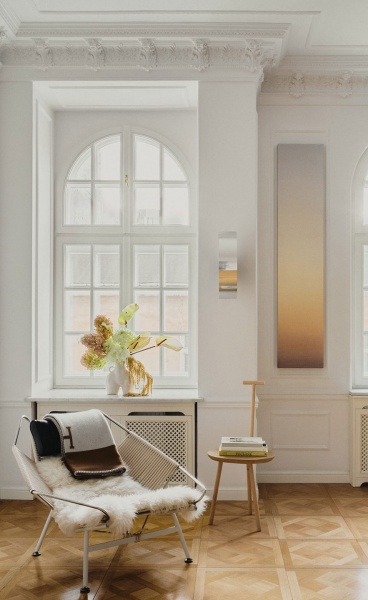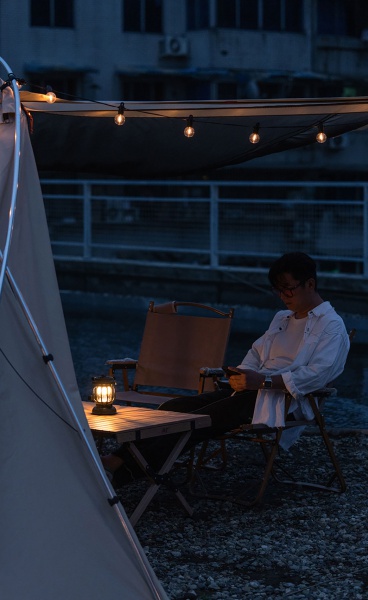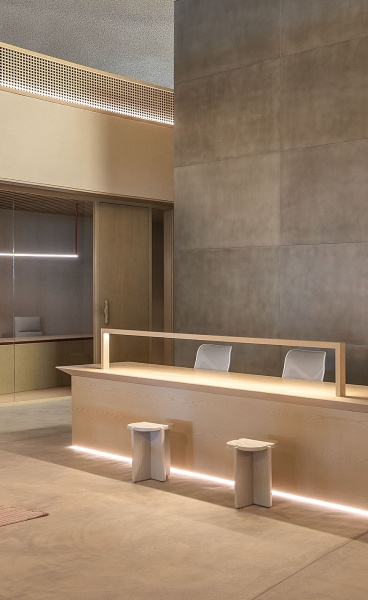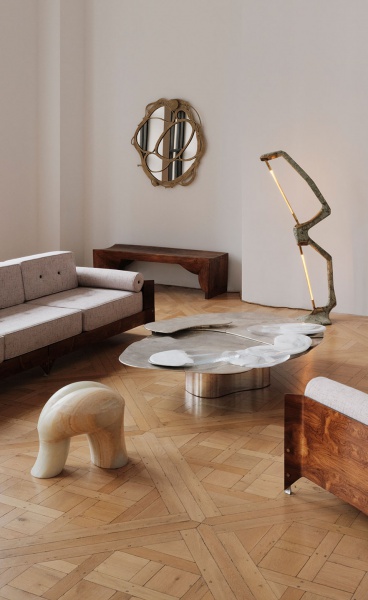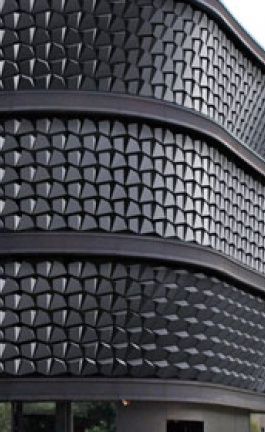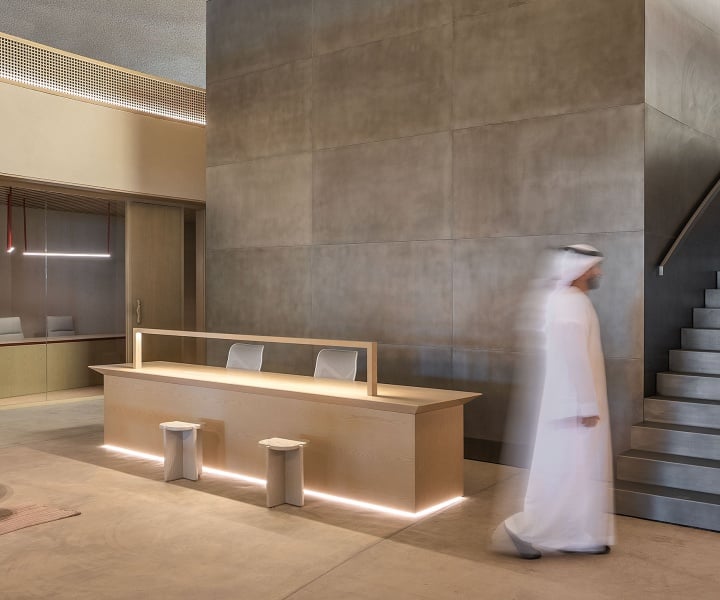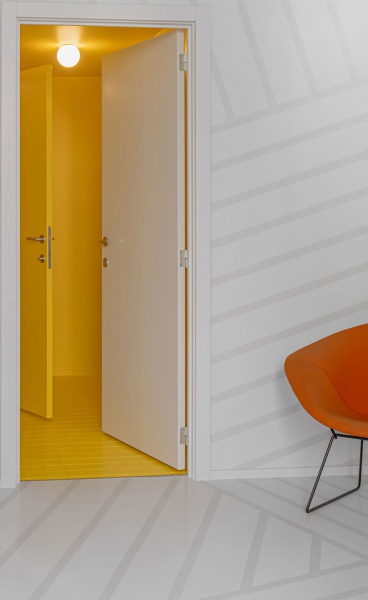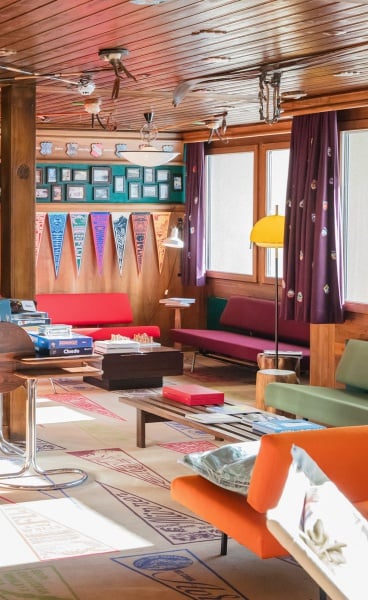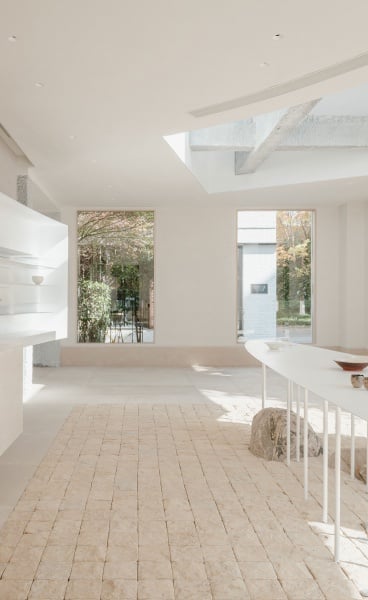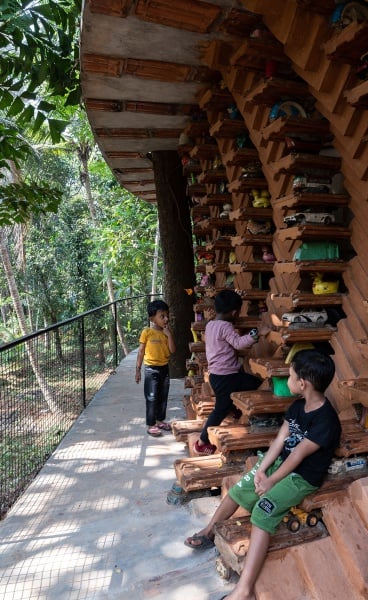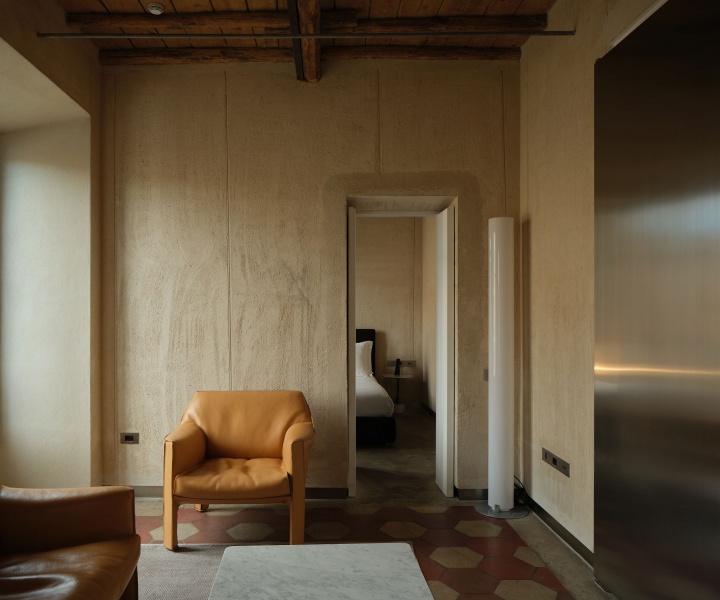Meta is dedicated to combining exquisite materials with the world's finest artisans to create 21st century design at a quality once seen at the heights of the decorative arts. A group of leading designers, including Asymptote, Edward Barber & Jay Osgerby, Tord Boontje, Matali Crasset and Wales & Wales have been commissioned in association with over 50 master ateliers and artisans to create Meta's inaugural collection of contemporary objects and furniture. The culmination of three years of intensive preparation, Meta's first collection launched in Europe during the Salone del Mobile in Milan in April 2008. A further five pieces are reserved for the North American launch in New York City on 12 May 2008.
Meta aspires to provide new opportunities for today's leading designers to create timeless contemporary objects and furniture of exceptional quality. Designers have worked closely with masters and artisans to create contemporary pieces that benefit from a diverse and largely uncommon selection of materials, proportions, details and techniques. Each selection has been purposeful to a piece's intended function to ensure a lasting quality and integrity. The initial collection ranges from a set of precious gold boxes to a stunning silver candelabra to an elaborate fig-leaf wardrobe.
words by wallpaper magazine
It's not just the big guns and odd ingenues that get people talking at Salone. Every year there are a few high profile launches of fully-fledged companies that cause a stir and 2008 has seen the birth of Meta, which has been one of the biggest talking points of the fair.
Meta is a British company, fathered by historic London antiques firm Mallet, and seeks to combine diminishing traditional 18th-century craftsmen skills with contemporary designers. The company serves to raise awareness of fast-receding skills and frame them in a modern design guise they wouldn't otherwise be associated with. And the resulting products are quite exceptional.
Considering the first collection has been three years in the making, with over 200 craftsmen from across the globe involved just to find the right people for the task, it's no surprise the unveiling this week was such an event. The collection was revealed amidst some very beautiful oversized wooden crates in an otherwise stark setting, that's served to heighten the impact.
And what of the pieces themselves? Each would be worthy of a small essay explaining the technique, material and work that went into it. Suffice to say the likes of Matali Crasset, Toord Boontje, BarberOsgerby and Asymptote have each clearly met the challenge of working with unusual materials and traditional techniques head on.
THE COLLECTION
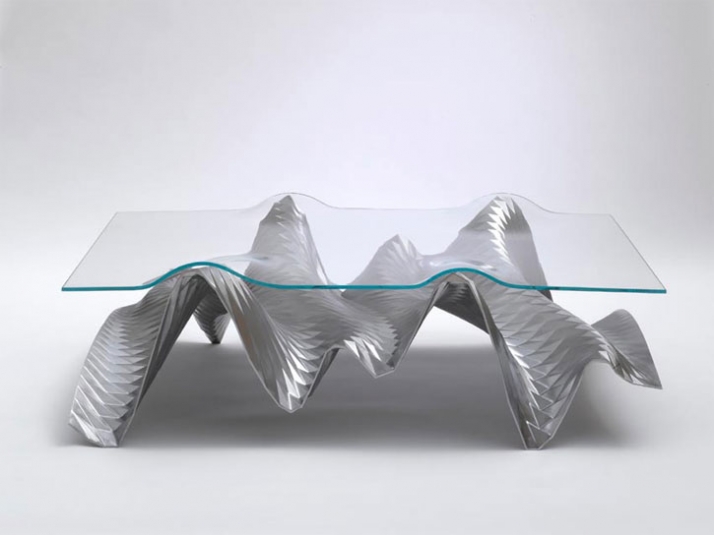
Ivo_03
Asymptote
Hani Rashid & Lise Anne Couture
This elegant and unique table features slumped glass suspended across a contiguous and abstracted alloy surface of diamond-shaped facets. The table’s architecture is the result of an asymmetric metal topography of mathematically delineated folds and crevices that create a powerful and sensual curvature. The base of the table is made of a bespoke formula of Tula steel, an historic metal that has been recreated by Meta based upon the analysis of an original and rare piece of Imperial Tula steel from 1780. Using the same craftsmen responsible for restoring parts of the Kremlin Palace, the perimeter edge of the metal base is hand-etched with a subtle and sympathetic pattern of incised relief and handfinished using traditional polishing methods to create a visually crisp surface. The undulating troughs and peaks give way to the perception of an arc when the table is viewed from the side, a purposeful refinement by Asymptote reminiscent of the accumulated outlines of the underside of a landscape. This effect serves to enhance the overall elegance and ‘lightness’ of the piece while also adding a subtly sophisticated visual balance when seen in combination with the intensity of the surface geometry. (1.5 x 0.9 x 0.5m | 59 x 35 x 18in)
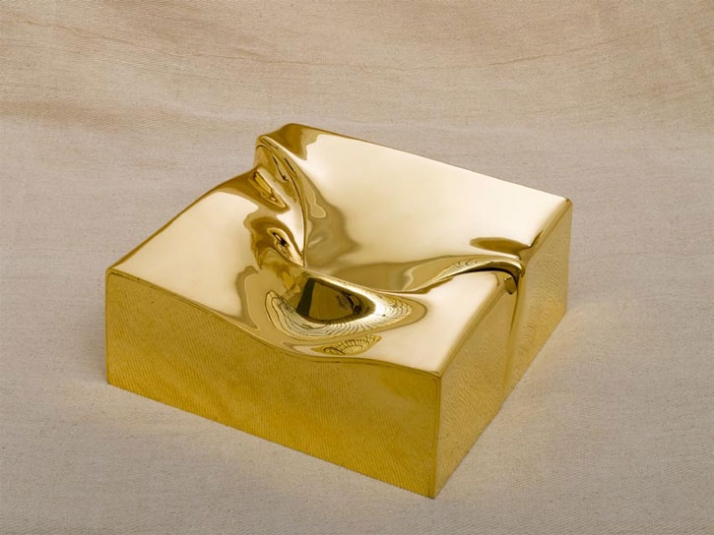
Mnemos _01, _02, _03
Asymptote
Hani Rashid & Lise Anne Couture
Asymptote has designed a series of exquisite gold boxes in collaboration with a pre-eminent Parisian atelier that specialises in creating the finest of handmade objects. These exceptional containers mark a reintroduction of the once highly coveted, and still highly collectable ‘precious gold boxes’ of the 1700s. The finest boxes of that time were no larger than the palm of one’s hand, were of solid gold and possessed the intricate detailing and complex hinging of much larger objects — the perfection of each join, closure and hinge and the object’s hand-applied decoration were the eloquent expression of a master’s most highly esteemed skills. Mnemos_03 The third and largest box in the series, intended for jewellery, is made of silver gilt. With natural holds found amidst the sensual surface, the sides pivot open to reveal a nested puzzle of seven single- and double-height compartments and made of satinwood, a fine- grained wood prized in the 18th century. The compartments are polished to a deep golden glow and are fitted with perfectly sized twin sets of kid leather pillows that protect whatever might be kept inside.(250 x 250 x 110mm| 9.8 x 9.8 x 4.3in)

Cidade
Edward Barber & Jay Osgerby
The candle-laden surtout de table is a collection of seven ‘towers’ fixed atop a hovering silver landscape which itself rests upon a hidden under-base of golden-polished pearwood. Perhaps reminiscent of an architectural utopia, each tower rises on a starburst pattern of silver blades and soft radii and is crowned by a flawless, mirror-polished silver disc, itself rising almost imperceptibly to catch and play with the candlelight emanating from its centre. The handmade shapes are a combination of spun, rolled, cast and hand-joined 958 Britannia silver (a rarely used and exceptionally pure silver standard). Cidade is lit with bespoke candles made of a custom beeswax formulation, and each candle is held within a removable silver bobèche whose perimeter edge and retreating wax is kept neatly hidden by a separate simple silver collar.(510 x 310 x 200mm | 20 x 12 x 8in)
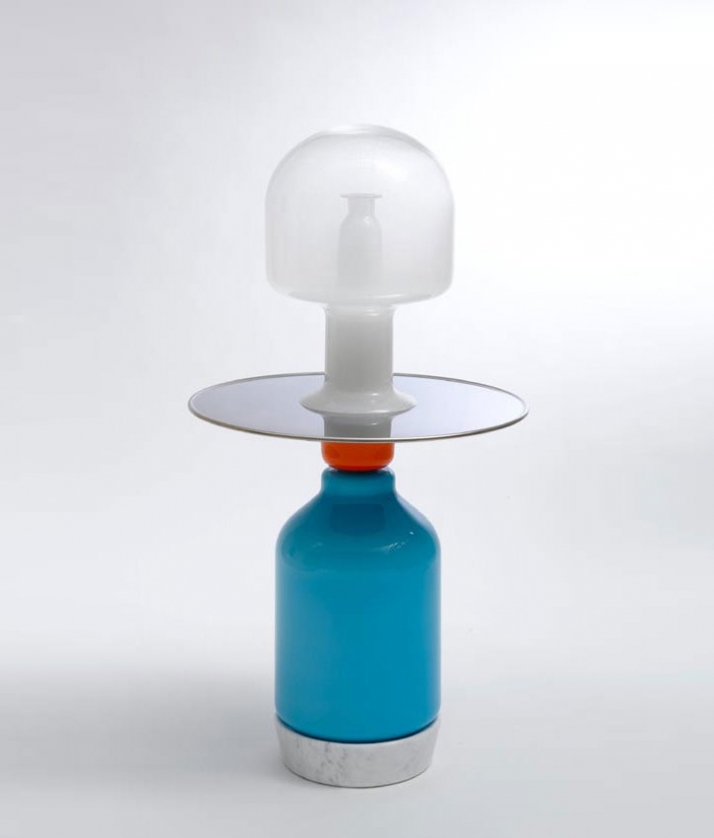
Cupola
Edward Barber & Jay Osgerby
In collaboration with Venini, the innovative Italian glass company, Cupola continues the tradition and creative possibilities of hand- blown glass. Reminiscent of the brief yet magnificent trend of glass furniture in the 19th century, this reading table is made of seven hand-blown glass elements variously nested and joined one atop the other. The dimensions and complexity of this piece, made by one of Venini’s most experienced master craftsman, have pushed all aspects of production, employing multiple techniques that include free and mould blown glass, doppio incalmo joins and a spiral of mezza filigrana glass. The colours, delicacy of forms and joins of each part all take advantage of Venini’s trademark leadership. The base and top are mould blown while the other parts are free blown. The apparently solid base of the reading table is in fact four-layer opaline glass. The internal stem used to encase the light is of milk-white glass followed by a section of spiralled white and clear mezza filigrana providing a fine tracery as a filter for light, and crowned by a third final section of coloured glass which rings the top outer edge. The dome used for Cupola’s namesake top is blown from a single gather of glass and is at the very limit of what is physically possible. Cupola is available in a selectively varied palette, and depending upon this choice, rests atop a base of black Belgian or white Carrara marble. The table is mirror-polished, cast and spun white bronze.(1.1 x 0.6m | 43 x 24in)
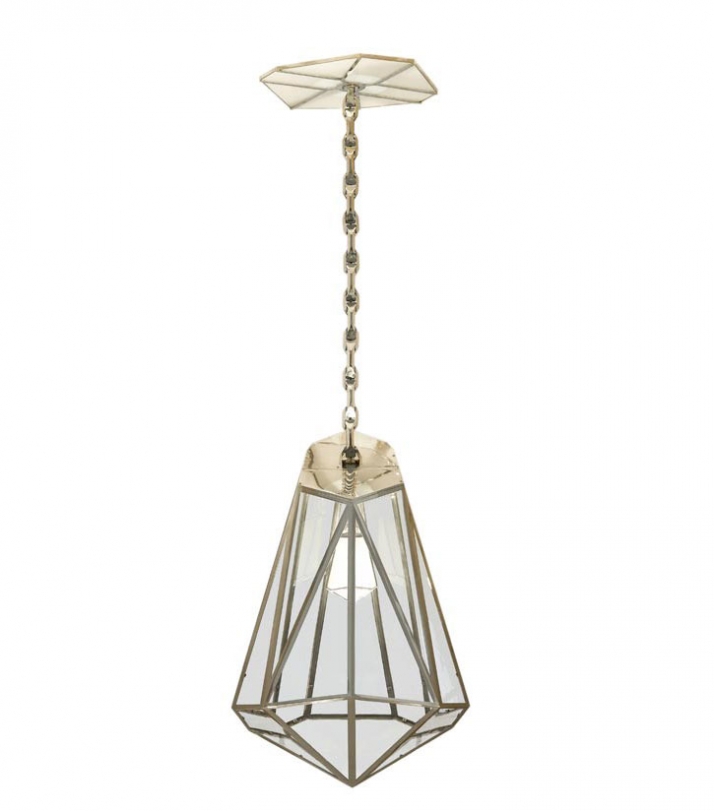
Diamonds Are a Girl’s Best Friend 1
Matali Crasset
Matali Crasset has transformed the traditional hanging lantern archetype into a symphony of 102 different angles of paktong, an ancient golden-hued, silver metal, encasing 24 mouthblown glass panes. The lantern is lit by an internal hanging pendant of a similar shape, made with hand-blown, milk-white glass and accented with shards of clear light escaping from the open-edged frame. The lantern is suspended by a custom paktong chain with a unique repeating master link design. The paktong, a unique, non-tarnishing metal, was re-created by Meta with the help of Oxford University’s archaeological material sciences unit and a small, specialist foundry with a particular expertise in complex historic alloys. The Meta-paktong formulation is based upon a candlestick from 1720 made of Chinese-sourced paktong which possesses a particularly beautiful patina. All of the structural elements of this piece have been cast by the lost wax method.(0.8 x 0.6m | 31 x 24in)

Glissade
Wales & Wales
Rod & Alison Wales
The angulated rippled ash surface of this elegant and graceful writing desk floats above olive ash legs, which themselves appear to float marginally above the floor. Nestled into the far right corner and covered by a wooden-hinged extension of ash sits a partially concealed red lacquer compartment. It is an unusual shade of red with orange undertones and is inspired by the colour of the Lazcano suite made by Giles Grendey in 1720 for the Duke Infantado. With a modest pressure, a secret button marked only by a small ‘M’ made in marquetry of pre-historic oak allows the entire desk surface to slide silently sideways on leather covered box wood wheels to reveal a luxuriously butter-leather lined hiding place. The silent sliding mechanisms and hidden compartment of the desk are further concealed by a chestnut dust cover.(1.5 x 0.7 x 0.8m | 58 x 26 x 30in)

